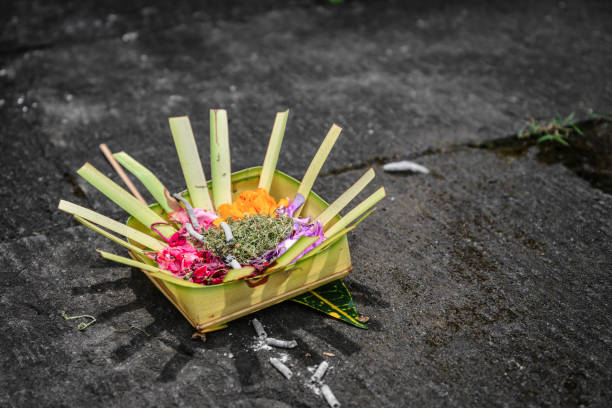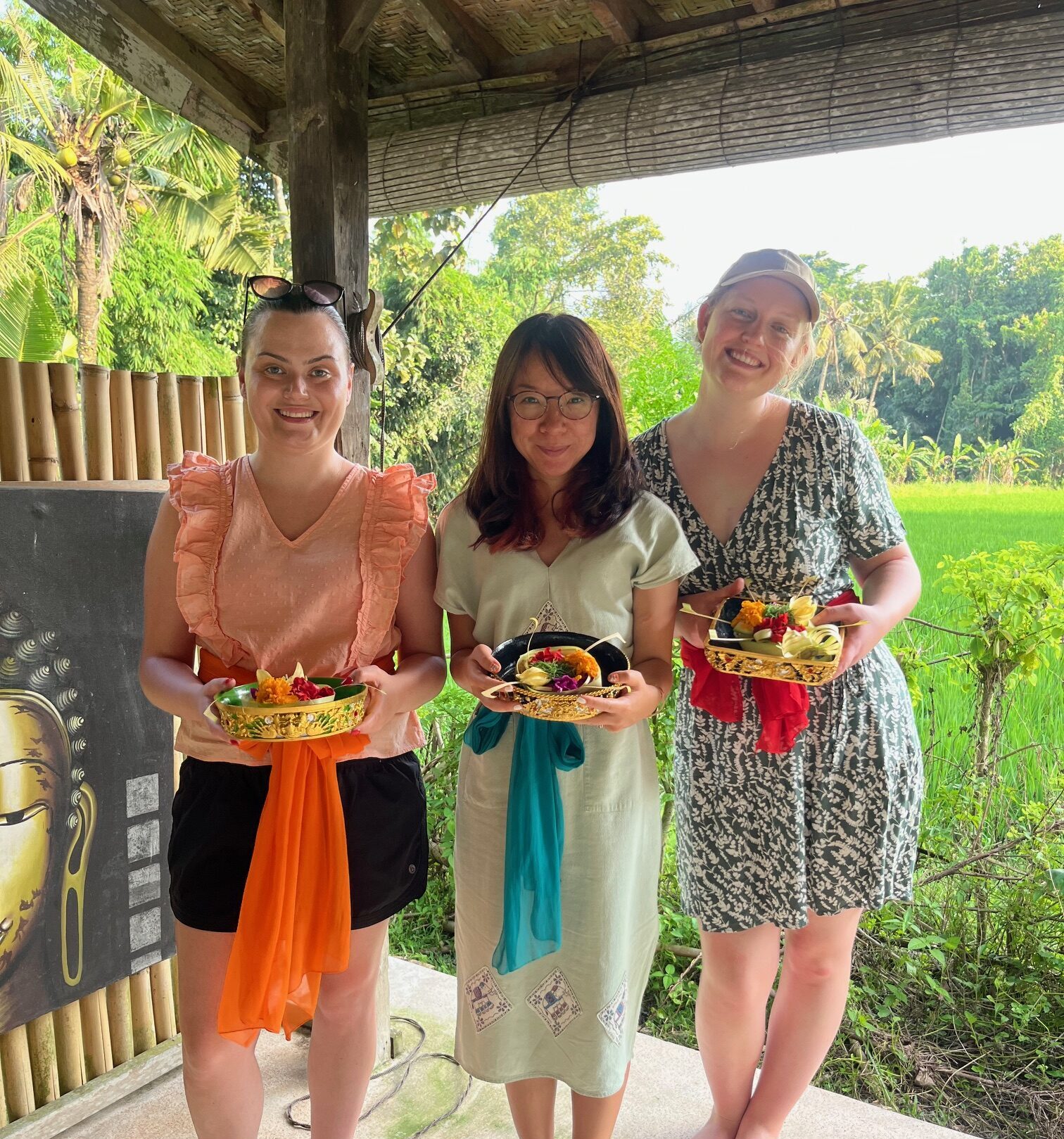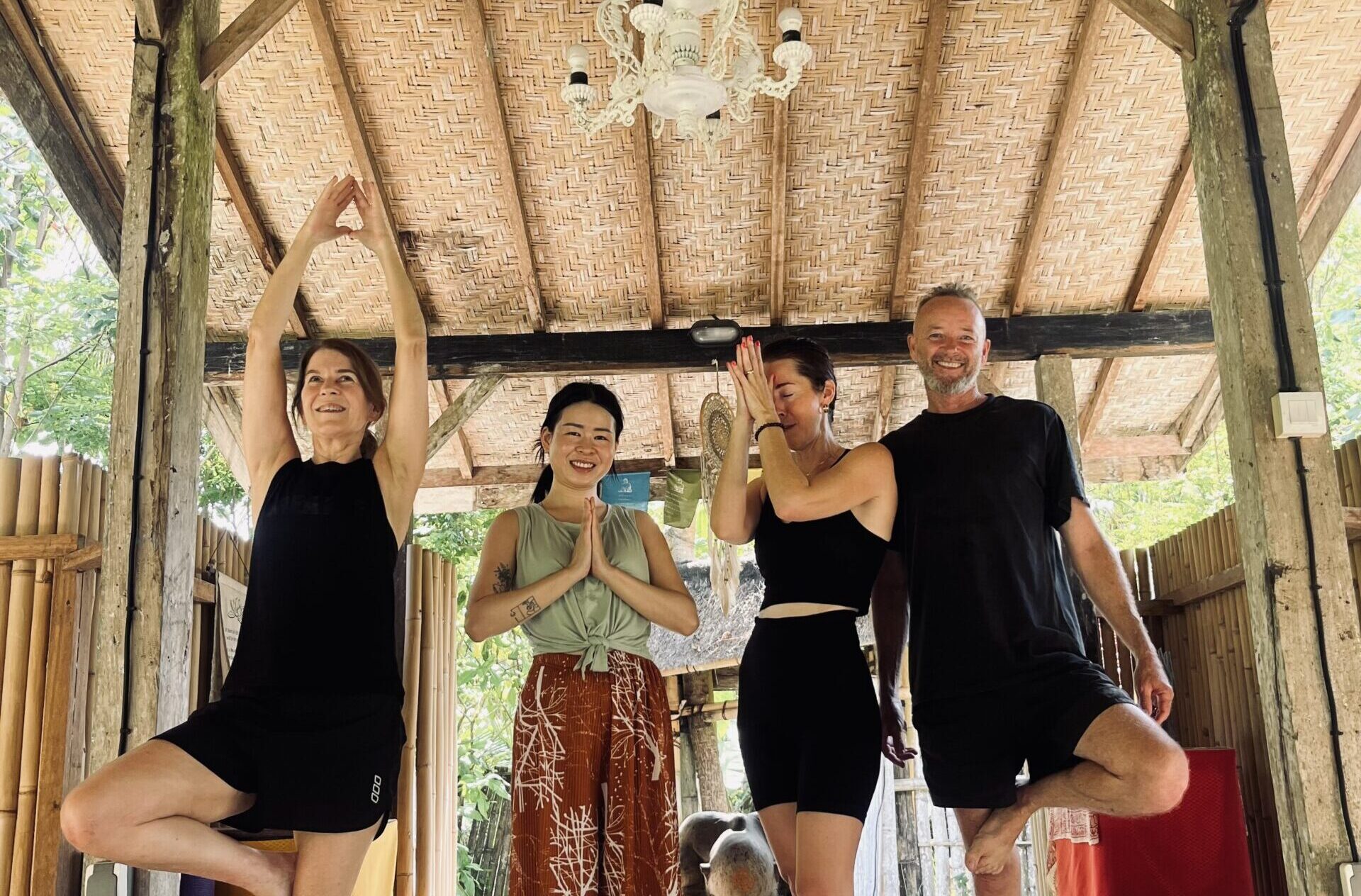
Often known as the Island of the Gods, Bali is a cultural treasure trove as much as a refuge for those looking for beaches and active nightlife. Among the many spiritual traditions that entwine Balinese life, Canang Sari is very important.
If you have visited this island, you have probably seen little, vibrant floral displays set on streets, in temples, or outside residences. In Balinese Hinduism, these exquisite presents are significant representations of thankfulness and loyalty, not just ornamental objects.
But just what is Canang Sari, and why is it so important for Balinese everyday life? From its history to its meaning, let’s explore the core of Canang Sari!
The History of Canang Sari, a Beauty of Balinese Cultural Heritage
Apart from the breathtaking scenery, Bali is mostly loved because of its rich traditions, which have great spiritual resonance through its culture.
One of the most recognizable practices here is Canang Sari. It is a small but valuable offering that is left in houses, temples, and the streets. This daily act is both a sign of loyalty and a beautiful reminder of how people, Gods, and nature all work together. Here’s the detail:
● What is Canang Sari?
Balinese Hindus make an offering called Canang Sari every day to show their thanks to the Gods. The name comes from the Kawi language, where “Ca” means “beautiful,” “Nang” means “purpose,” and “Sari” means “essence.” As a beautiful statement of love and balance, these words sum up what the gift means.
A Canang Sari is made up of many parts, such as a small tray made from palm leaves, colorful flower pieces, rice, and incense. Each of these parts has a spiritual meaning that shows how they are all linked and in balance.
Some things, like the flowers, are set up in a certain way to honor different Hindu Gods, like Iswara, Brahma, Mahadeva, and Vishnu.
● Why Do Balinese People Offer Canang Sari?
Learning Canang Sari won’t be complete without exploring its history. Balinese Hindu philosophy, which stresses balance and thanks, is where the practice of giving Canang Sari comes from.
For the Balinese, life is a constant battle between good and evil, happiness and sadness. This gift helps keep the balance.
Balinese people thank the Gods for blessing them with wealth and health by giving Canang Sari. They also try to appease evil spirits to keep peace. Because of this, this is a great way to help our personal growth.
Even until today, this daily practice is still a big part of Balinese faith and culture. Women traditionally take on the responsibility of preparing the offerings, a process known as “metanding”.
What are the Elements of Canang Sari?
If you want to learn something new, making a Canang Sari can be a memorable activity you might try when you visit this Island of Gods.
From designing the palm-leaf trays to arranging the flowers and sprinkling holy water over the finished gifts, this work calls for great attention to detail. Although some people today buy pre-made Canang Sari, the act of preparing it from scratch is still a cherished ritual.
But in general, everyone can make Canang Sari as long as we know the elements, which consist of:
● Ceper
The Ceper serves as the base of a Canang Sari. It is made from young palm leaves and shaped into a rectangular tray.
It stands for the Panca Maha Bhuta (the five universal elements) and the Panca Indriya (the five senses), therefore reflecting the physical body. Without this basis, the offering would not be whole, just as the body is the vehicle for life.
● Porosan
Atop the Ceper you will discover the Porosan, a concoction of betel leaves, lime, and resinous material called gambir.
Porosan reflects the Hindu trinity of Brahma (the creator), Vishnu (the preserver), and Shiva (the destroyer). Encouragement of balance in everyday life and personal growth, it also represents unity in thoughts, words, and deeds.
● Rice
Rice, known as Wija, is an integral part of Canang Sari. It symbolizes the Ātma, or soul, representing the life force that animates the body. This element reminds us that life is a gift from Ida Sang Hyang Widhi Wasa, the Supreme God.
● Flower Petals
Flowers are the most eye-catching component of Canang Sari, but their arrangement is not random. Each color represents a specific God and direction, which symbolizes harmony, peace, and sincerity in devotion. As mentioned before, here are the deities:
- White (East) for Iswara;
- Red (South) for Brahma;
- Yellow (West) for Mahadeva;
- Blue or Green (North) for Vishnu.
● Kembang Rampai
This is placed on top of the flower arrangement and symbolizes wisdom. Some flowers are fragrant, while others are not—reminding us that life can be both joyful and challenging.
● Snacks, Sugarcane, and Banana
These items represent the Tedong Ongkara, which symbolizes creation (Upetti), preservation (Stiti), and destruction (Pralinan). All are the forces that maintain balance in the universe.
● Sampian Uras
The Sampian Uras, or duras, is crafted from palm fronds arranged in a circular shape. It has eight segments that symbolize the wheel of life and the Asta Iswarya (eight characteristics) that guide human life.
● Lepa
Lepa, or boreh miyik, stands for good behavior and devotion. It reflects how our actions define how others see us and our connection to Ida Sang Hyang Widhi Wasa.
● Fragrant Oil
Lastly, fragrant oil is added to the offering to stand for self-control and peace of mind. The smell also makes the spiritual environment better, which helps people concentrate during prayers.
The Beautiful Meaning of Canang Sari

Through Canang Sari, the Balinese demonstrate their belief in the interconnectedness of all things. As you can see above, each element represents its own meaning, and learning them can help you to get a deeper reflection on gratitude and harmony. It’s a practice of mindfulness, gratitude, and devotion.
For non-Balinese, participating in this tradition provides a glimpse into the depth of Balinese spirituality. It’s an opportunity to reflect on your own personal growth, embracing the values of gratitude and balance that Canang Sari embodies.
Let’s Explore Something New with One Fit Wellness!
At One Fit Wellness, we offer tailored wellness retreat packages that combine Balinese culture like Canang Sari with learning wellness activities like yoga, meditation, and fitness. Here are the packages you can choose:
- 3 Days Immersive Experience: Balinese History, Culture, Yoga & Adventure
- 5 Days Reset & Relax – Cultural Experience
- 7 Days Pure Active Fitness Holiday with Balinese Culture Experience
Ready to experience the essence of Bali? Explore our retreats at One Fit Wellness and begin your journey with something new now!








